Infants’ Individuation of Faces by Gender
Abstract
1. Introduction
1.1. Face Perception during Infancy
1.2. Beyond Perceptual Discrimination
1.3. Individuation of Natural Kinds
1.4. Current Study
2. Materials and Methods
2.1. Participants
2.1.1. 12-Month-Olds
2.1.2. 24-Month-Olds
2.2. Stimuli and Apparatus
2.3. Procedure
2.4. Reaching Behavior Coding
2.5. Analyses
3. Results
3.1. Condition 1: Human vs. Non-human
3.1.1. 12-Month-Olds
3.1.2. 24-Month-Olds
3.2. Condition 2: Female vs. Male
3.2.1. 12-Month-Olds
3.2.2. 24-Month-Olds
4. Discussion
4.1. Infants’ Representation of Human-Face Kinds
4.2. Infants’ Kind-Based Individuation and Gender
4.3. Connecting Perception to Conceptual Representations
4.4. Future Directions
5. Conclusions
Author Contributions
Funding
Acknowledgments
Conflicts of Interest
References
- Reid, V.M.; Dunn, K.; Young, R.J.; Amu, J.; Donovan, T.; Reissland, N. The human fetus preferentially engages with face-like visual stimuli. Curr. Biol. 2017, 27, 1825–1828. [Google Scholar] [CrossRef] [PubMed]
- Reynolds, G.D.; Roth, K.C. The development of attentional biases for faces in infancy: A developmental systems perspective. Front. Psychol. 2018, 9, 1–16. [Google Scholar] [CrossRef] [PubMed]
- Pascalis, O.; de Haan, M.; Nelson, C.A. Is face processing species-specific during the first year of life? Science 2002, 296, 1321–1323. [Google Scholar] [CrossRef] [PubMed]
- Kelly, D.J.; Quinn, P.C.; Slater, A.M.; Lee, K.; Ge, L.; Pascalis, O. The other-race effect develops during infancy: Evidence of perceptual narrowing. Psychol. Sci. 2007, 18, 1084–1089. [Google Scholar] [CrossRef] [PubMed]
- Quinn, P.C.; Yahr, J.; Kuhn, A.; Slater, A.M.; Pascalis, O. Representation of the gender of human faces by infants: A preference for female. Perception 2002, 31, 1109–1121. [Google Scholar] [CrossRef] [PubMed]
- Pascalis, O.; Schonen, S.D.E.; Morton, J.; Deruelle, C.; Fabre-Grenet, M. Mother ’s face recognition by neonates: A replication and an extension. Infant Behav. Dev. 1995, 18, 79–85. [Google Scholar] [CrossRef]
- Paukner, A.; Huntsberry, M.E.; Suomi, J.S. Visual discrimination of male and female faces by infant rhesus macaques. Dev. Psychobiol. 2010, 52, 54–61. Available online: http://www.pubmedcentral.nih.gov/articlerender.fcgi?artid=2807134&tool=pmcentrez&rendertype=abstract (accessed on 20 December 2012). [CrossRef]
- Rennels, J.L.; Davis, R.E. Facial experience during the first year. Infant Behav. Dev. 2008, 31, 665–678. [Google Scholar] [CrossRef]
- Sugden, N.A.; Mohamed-Ali, M.I.; Moulson, M.C. I spy with my little eye: Typical, daily exposure to faces documented from a first-person infant perspective. Dev. Psychobiol. 2014, 56, 249–261. [Google Scholar] [CrossRef]
- Sugden, N.A.; Moulson, M.C. These are the people in your neighbourhood: Consistency and persistence in infants’ exposure to caregivers’ relatives’ and strangers’ faces across contexts. Vis. Res. 2018, 157, 230–241. [Google Scholar] [CrossRef]
- Scherf, K.S.; Scott, L.S. Connecting developmental trajectories: Biases in face processing from infancy to adulthood. Dev. Psychobiol. 2012, 54, 643–663. [Google Scholar] [CrossRef] [PubMed]
- Scott, L.S.; Fava, E. The own-species face bias: A review of developmental and comparative data. Vis. Cogn. 2013, 21, 1364–1391. [Google Scholar] [CrossRef]
- Pascalis, O.; Loevenbruck, H.; Quinn, P.C.; Kandel, S.; Tanaka, J.W.; Lee, K. On the links among face processing, language processing, and narrowing during development. Child. Dev. Perspect. 2014, 8, 65–70. [Google Scholar] [CrossRef] [PubMed]
- Hadley, H.; Rost, G.C.; Fava, E.; Scott, L.S. A mechanistic approach to cross-domain perceptual narrowing in first year of life. Brain Sci. 2014, 4, 613–634. [Google Scholar] [CrossRef] [PubMed]
- Ramsey, J.L.; Langlois, J.H.; Marti, N.C. Infant categorization of faces: Ladies first. Dev. Rev. 2005, 25, 212–246. [Google Scholar] [CrossRef]
- Ramsey-Rennels, J.L.; Langlois, J.H. Infants’ Differential Processing of Female and Male Faces. Curr. Dir. Psychol. Sci. 2006, 15, 59–62. Available online: http://cdp.sagepub.com/lookup/doi/10.1111/j.0963-7214.2006.00407.x (accessed on 1 November 2012). [CrossRef]
- Bushnell, I.W.R.; Sai, F.; Mullin, J.T. Neonatal recognition of the mother’s face. Br. J. Dev. Psychol. 1989, 7, 3–15. [Google Scholar] [CrossRef]
- Barrera, M.E.; Maurer, D. Discrimination of strangers by the three-month-old. Child. Dev. 1981, 52, 558–563. [Google Scholar] [CrossRef]
- Hillairet de Boisferon, A.; Uttley, L.; Quinn, P.C.; Lee, K.; Pascalis, O. Female face preference in 4-month-olds: The importance of hairline. Infant Behav. Dev. 2014, 37, 676–681. [Google Scholar] [CrossRef][Green Version]
- Kim, H.I.; Johnson, K.L.; Johnson, S.P. Gendered race: Are infants’ face preferences guided by intersectionality of sex and race? Front. Psychol. 2015, 6, 1–7. [Google Scholar] [CrossRef][Green Version]
- Tham, D.S.Y.; Bremner, J.G.; Hay, D. In infancy the timing of emergence of the other-race effect is dependent on face gender. Infant Behav. Dev. 2015, 40, 131–138. [Google Scholar] [CrossRef] [PubMed][Green Version]
- Quinn, P.C.; Conforto, A.; Lee, K.; O’Toole, A.J.; Pascalis, O.; Slater, A.M. Infant preference for individual women’s faces extends to girl prototype faces. Infant Behav. Dev. 2010, 33, 357–360. Available online: http://www.ncbi.nlm.nih.gov/pubmed/20434777 (accessed on 1 November 2012). [CrossRef] [PubMed]
- Quinn, P.C.; Uttley, L.; Lee, K.; Gibson, A.; Smith, M.; Slater, A.M.; Pascalis, O. Infant preference for female faces occurs for same- but not other-race faces. J. Neuropsychol. 2008, 2, 15–26. Available online: http://doi.wiley.com/10.1348/174866407X231029 (accessed on 11 July 2011). [CrossRef] [PubMed]
- Liu, S.; Xiao, N.G.; Quinn, P.C.; Zhu, D.; Ge, L.; Pascalis, O.; Lee, K. Asian infants show preference for own-race but not other-race female faces: The role of infant caregiving arrangements. Front. Psychol. 2015, 6, 593–615. [Google Scholar] [CrossRef] [PubMed][Green Version]
- Rennels, J.L.; Kayl, A.J.; Langlois, J.H.; Davis, R.E.; Orlewicz, M. Asymmetries in infants’ attention toward and categorization of male faces: The potential role of experience. J. Exp. Child. Psychol. 2016, 142, 137–157. [Google Scholar] [CrossRef]
- Righi, G.; Westerlund, A.; Congdon, E.L.; Troller-Renfree, S.; Nelson, C.A. Infants’ experience-dependent processing of male and female faces: Insights from eye tracking and event-related potentials. Dev. Cogn. Neurosci. 2014, 8, 144–152. [Google Scholar] [CrossRef] [PubMed]
- Rennels, J.L.; Juvrud, J.; Kayl, A.J.; Asperholm, M.; Gredeback, G.; Herlitz, A. Caregiving experience and its relation to perceptual narrowing of face gender. Dev. Psychol. 2017, 53, 1437–1446. [Google Scholar] [CrossRef]
- Anzures, G.; Quinn, P.C.; Pascalis, O.; Slater, A.M.; Lee, K. Categorization, categorical perception, and asymmetry in infants’ representation of face race. Dev. Sci. 2010, 13, 553–564. [Google Scholar] [CrossRef]
- Quinn, P.C.; Doran, M.M.; Reiss, J.E.; Hoffman, J.E. Time course of visual attention in infant categorization of cats versus dogs: Evidence for a head bias as revealed through eye tracking. Child. Dev. 2009, 80, 151–161. [Google Scholar] [CrossRef]
- Quinn, P.C.; Lee, K.; Pascalis, O.; Tanaka, J.W. Narrowing in categorical responding to other-race face classes by infants. Dev. Sci. 2015, 19, 1–10. [Google Scholar] [CrossRef]
- de Haan, M.; Johnson, M.H.; Maurer, D.; Perrett, D.I. Recognition of individual faces and average face prototypes by 1- and 3-month-old infants. Cogn. Dev. 2001, 16, 659–678. [Google Scholar] [CrossRef]
- Rubenstein, A.J.; Kalakanis, L.; Langlois, J.H. Infant preferences for attractive faces: A cognitive explanation. Dev. Psychol. 1999, 35, 848–855. [Google Scholar] [CrossRef] [PubMed]
- Waxman, S.R.; Grace, A.D. Developing gender- and race-based categories in infancy: Evidence from 7-and 11-month-olds. In Psychology of Culture: Psychology of Emotions, Motivations and Actions; Hayes, G., Bryant, M., Eds.; Nova Science Publishers, Inc.: Hauppauge, NY, USA, 2012; pp. 159–175. [Google Scholar]
- Hillairet de Boisferon, A.; Dupierrix, E.; Quinn, P.C.; Lœvenbruck, H.; Lewkowicz, D.J.; Lee, K.; Pascalis, O. Perception of multisensory gender coherence in 6- and 9-month-old infants. Infancy 2015, 20, 661–674. [Google Scholar] [CrossRef] [PubMed]
- Poulin-Dubois, D.; Serbin, L.A.; Kenyon, B.; Derbyshire, A. Infants’ intermodal knowledge about gender. Dev. Psychol. 1994, 30, 436–442. [Google Scholar] [CrossRef]
- Richoz, A.; Quinn, P.C.; Hillairet de Boisferon, A.; Berger, C.; Loevenbruck, H.; Lewkowicz, D.J.; Lee, K.; Dole, M.; Caldara, R.; Pascalis, O. Audio-visual perception of gender by infants emerges earlier for adult-directed speech. PLoS ONE 2017, 12, e0169325. [Google Scholar] [CrossRef] [PubMed]
- Walker-Andrews, A.S.; Bahrick, L.; Raglioni, S.S.; Diaz, I. Infants’ bimodal perception of gender. Ecol. Psychol. 1991, 3, 55–75. [Google Scholar] [CrossRef]
- Poulin-Dubois, D.; Serbin, L.A.; Derbyshire, A. Toddlers’ intermodal and verbal knowledge about gender. Merrill-Palmer Q. 1998, 44, 338–354. [Google Scholar]
- White, H.; Jubran, R.; Heck, A.; Chroust, A.; Bhatt, R.S. Sex-specific scanning in infancy: Developmental changes in the use of face/head and body information. J. Exp. Child Psychol. 2019, 182, 126–143. [Google Scholar] [CrossRef]
- Xu, F. Object individuation and object identity in infancy: The role of spatiotemporal information, object property information, and language. Acta Psychol. 1999, 102, 113–136. [Google Scholar] [CrossRef]
- Xu, F. Categories, kinds, and object individuation in infancy. In Building Object Categories in Developmental Time; Gershkoff-Stowe, L., Rakison, D.H., Eds.; Lawrence Erlbaum Associates: Mahwah, NJ, USA, 2005; pp. 63–89. [Google Scholar]
- Cohen, L.B.; Cashon, C.H. Infant cognition. In Handbook of Child Psychology: Vol 2, Cognition, Perception, and Language; Kuhn, D., Siegler, R., Damon, W., Lerner, R.M., Eds.; John Wiley & Sons, Inc.: Hoboken, NJ, USA, 2006; pp. 214–251. [Google Scholar]
- Xu, F. Sortal concepts, object individuation, and language. Trends Cogn. Sci. 2007, 11, 400–406. [Google Scholar] [CrossRef]
- Xu, F. Count Nouns, Sortal Concepts, and the Nature of Early Words. In Kinds, Things, and Stuff: Mass Terms and Generics; Pelletier, J., Gershkoff-Stowe, L., Rakison, D.H., Eds.; Oxford Univ Press: Oxford, UK, 2010; pp. 191–206. [Google Scholar]
- Carey, S.; Xu, F. Infants’ knowledge of objects: Beyond object files and object tracking. Cognition 2001, 80, 179–213. [Google Scholar] [CrossRef]
- Cheries, E.W.; Mitroff, S.R.; Wynn, K.; Scholl, B.J. Do the same principles constrain persisting object representations in infant cognition and adult perception? The cases of continuity and cohesion. In The Origins of Object Cognition; Hood, B., Santos, L., Eds.; Oxford University Press: Oxford, UK, 2009. [Google Scholar]
- Scholl, B.J.; Leslie, A.M. Explaning the infant’s object concept: Beyond the perception/cognition dichotomy. In What is Cognitive Science? Lepore, E., Pylyshyn, Z., Eds.; Oxford: Blackwell, UK, 1999; p. 49. [Google Scholar]
- Xu, F.; Carey, S. Infants’ metaphysics: The case of numerical identity. Cogn. Psychol. 1996, 30, 111–153. [Google Scholar] [CrossRef] [PubMed]
- Xu, F.; Baker, A. Object individuation in 10-month-old infants using a simplified manual search method. J. Cogn. Dev. 2005, 6, 307–323. [Google Scholar] [CrossRef]
- Van de Walle, G.A.; Carey, S.; Prevor, M. Bases for object individuation in infancy: Evidence from manual search. J. Cogn. Dev. 2000, 1, 249–280. [Google Scholar] [CrossRef]
- Feigenson, L.; Carey, S. Tracking individuals via object-files: Evidence from infants’ manual search. Dev. Sci. 2003, 6, 568–584. [Google Scholar] [CrossRef]
- Xu, F.; Cote, M.; Baker, A. Labeling guides object individuation in 12-month-old infants. Psychol. Sci. 2005, 16, 372–377. [Google Scholar] [CrossRef]
- Dewar, K.; Xu, F. Do 9-month-old infants expect distinct words to refer to kinds? Dev. Psychol. 2007, 43, 1227–1238. [Google Scholar] [CrossRef]
- Rivera, S.M.; Nancie, A. Word comprehension facilitates object individuation in 10- and 11-month-old infants. Brain Res. 2007, 1146, 146–157. [Google Scholar] [CrossRef]
- Surian, L.; Caldi, S. Infants’ individuation of agents and inert objects. Dev. Sci. 2010, 13, 143–150. [Google Scholar] [CrossRef]
- Kibbe, M.M.; Leslie, A. Conceptually rich, perceptually sparse: Object representations in 6-month-olds’ working memory. Psychol. Sci. 2019, 30, 362–375. [Google Scholar] [CrossRef]
- Bonatti, L.L.; Frot, E.; Zangl, R.; Mehler, J. The human first hypothesis: Identification of conspecifics and individuation of objects in the young infant. Cogn. Psychol. 2002, 44, 388–426. [Google Scholar] [CrossRef] [PubMed]
- Bonatti, L.L.; Frot, E.; Mehler, J. What face inversion does to infants’ counting abilities. Psychol. Sci. 2005, 16, 506–510. [Google Scholar] [CrossRef] [PubMed]
- Taborda-osorio, H.; Cheries, E.W. Infants’ agent individuation: It’s what’s on the insides that counts. Cognition 2018, 175, 11–19. [Google Scholar] [CrossRef] [PubMed]
- Feigenson, L.; Carey, S. On the limits of infants’ quantification of small object arrays. Cognition 2005, 97, 295–313. [Google Scholar] [CrossRef] [PubMed]
- Kinzler, K.D.; Shutts, K.; Correll, J. Priorities in social categories. Eur. J. Soc. Psychol. 2010, 40, 581–592. [Google Scholar] [CrossRef]
- Ma, D.S.; Correll, J.; Wittenbrink, B. The Chicago face database: A free stimulus set of faces and norming data. Behav. Res. Methods 2015, 47, 1122–1135. [Google Scholar] [CrossRef] [PubMed]
- Pascalis, O.; de Martin de Vivies, X.; Anzures, G.; Quinn, P.C.; Slater, A.M.; Tanaka, J.W.; Lee, K. Development of face processing. Wiley Interdiscip. Rev. Cogn. Sci. 2011, 6, 666–675. [Google Scholar] [CrossRef]
- Field, T.M.; Cohen, D.; Garcia, R.; Greenberg, R. Mother-stranger face discrimination by the newborn. Infant Behav. Dev. 1984, 7, 19–25. [Google Scholar] [CrossRef]
- Waxman, S.R. Names will never hurt me? Naming and the development of racial and gender categories in preschool-aged children. Eur. J. Soc. Psychol. 2010, 610, 593–610. [Google Scholar] [CrossRef]
- Dunham, Y.; Baron, A.S.; Banaji, M.R. The development of implicit intergroup cognition. Trends Cogn. Sci. 2008, 12, 248–253. [Google Scholar] [CrossRef]
- Shutts, K.; Kinzler, K.D.; Katz, R.C.; Tredoux, C.; Spelke, E.S. Race preferences in children: Insights from South Africa. Dev. Sci. 2011, 14, 1283–1291. [Google Scholar] [CrossRef] [PubMed]
- Rhodes, M.; Gelman, S.A. A developmental examination of the conceptual structure of animal, artifact, and human social categories across two cultural contexts. Cogn. Psychol. 2009, 59, 244–274. [Google Scholar] [CrossRef] [PubMed]
- Shutts, K. Young children’s preferences: Gender race, social status. Child. Dev. Perspect. 2015, 9, 262–266. [Google Scholar] [CrossRef]
- Diesendruck, G.; Deblinger-Tangi, R. The Linguistic Construction of Social Categories in Toddlers. Child. Dev. 2014, 85, 114–123. [Google Scholar] [CrossRef] [PubMed]
- Diesendruck, G.; Weiss, E. Children’s differential weighting of cues to social categories. Cogn. Dev. 2015, 33, 56–72. [Google Scholar] [CrossRef]
- Weisman, K.; Johnson, M.V.; Shutts, K. Young children’s automatic encoding of social categories. Dev. Sci. 2015, 18, 1036–1043. [Google Scholar] [CrossRef] [PubMed]
- Diesendruck, G.; Goldfein-Elbaz, R.; Rhodes, M.; Gelman, S.; Neumark, N. Cross-cultural differences in children’s beliefs about the objectivity of social categories. Child. Dev. 2013, 84, 1906–1917. [Google Scholar] [CrossRef] [PubMed]
- Taylor, M.G.; Rhodes, M.; Gelman, S.A. Boys will be boys; Cows will be cows: Children’s essentialist reasoning about gender categories and animal species. Child. Dev. 2009, 80, 461–481. [Google Scholar] [CrossRef] [PubMed]
- Dunham, Y. Implicit intergroup bias and the long road to predicting discrimination. In The Wiley Handbook of Group Processes in Children and Adolescents; Rutland, A., Nesdale, D., Brown, C.S., Eds.; Wiley-Blackwell: West Sussex, UK, 2017; pp. 203–220. [Google Scholar]
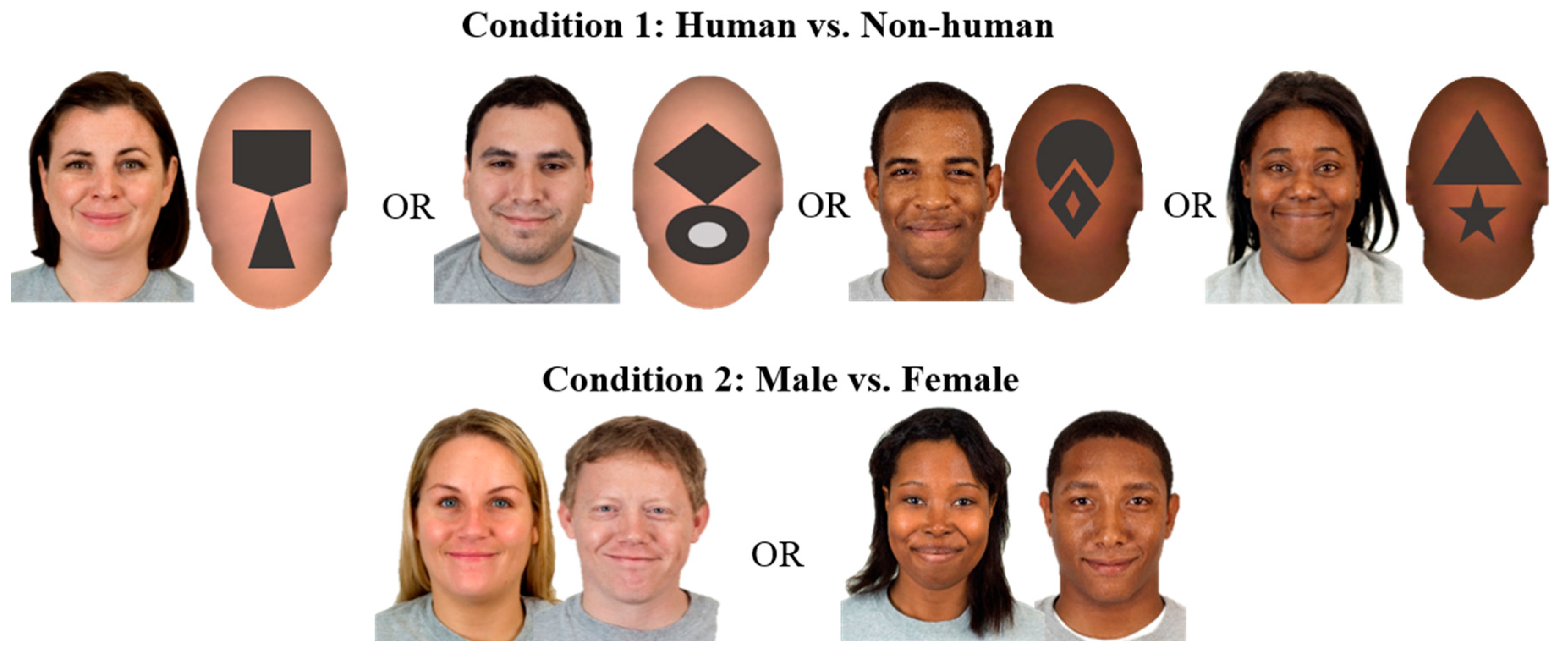
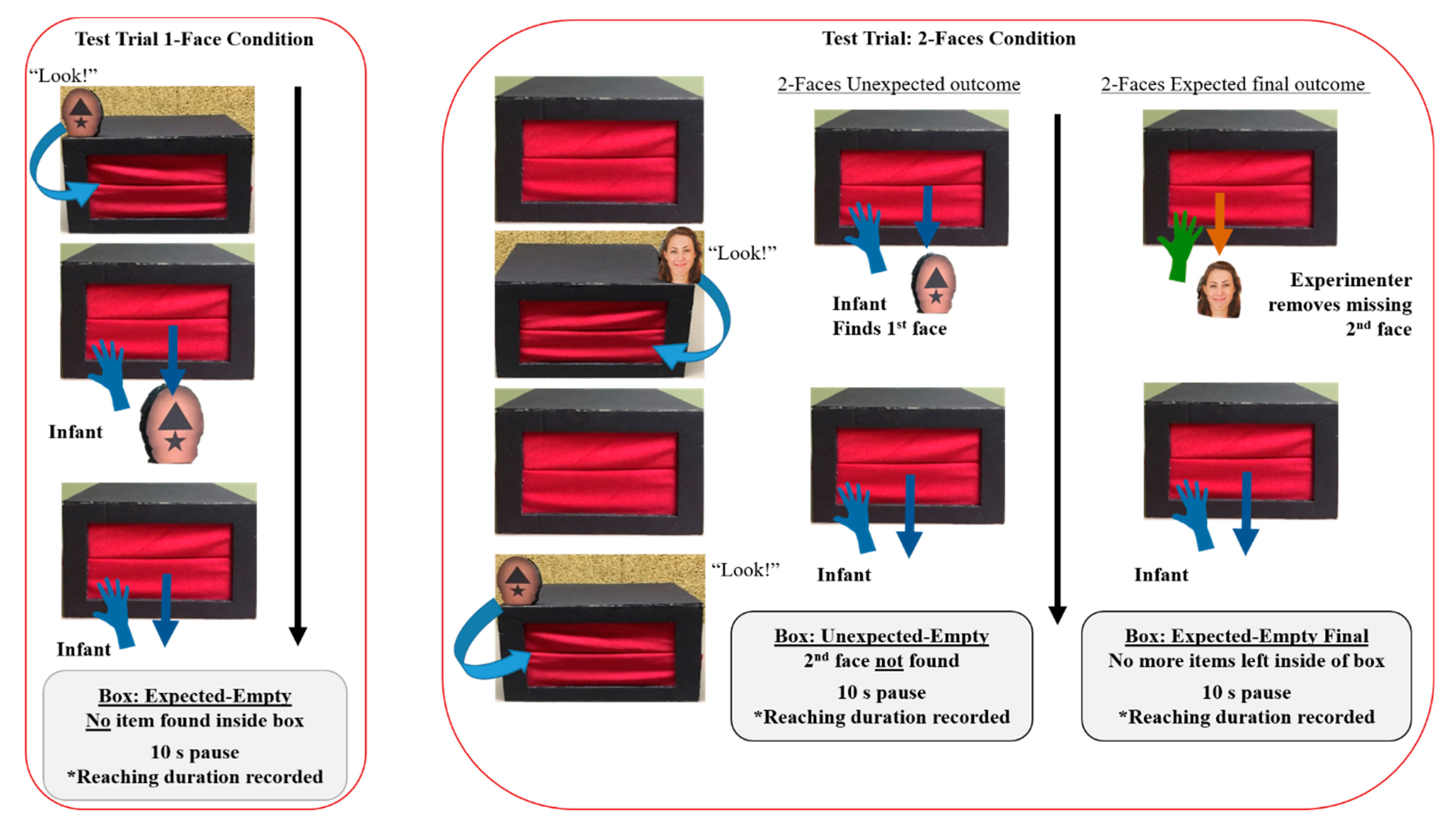
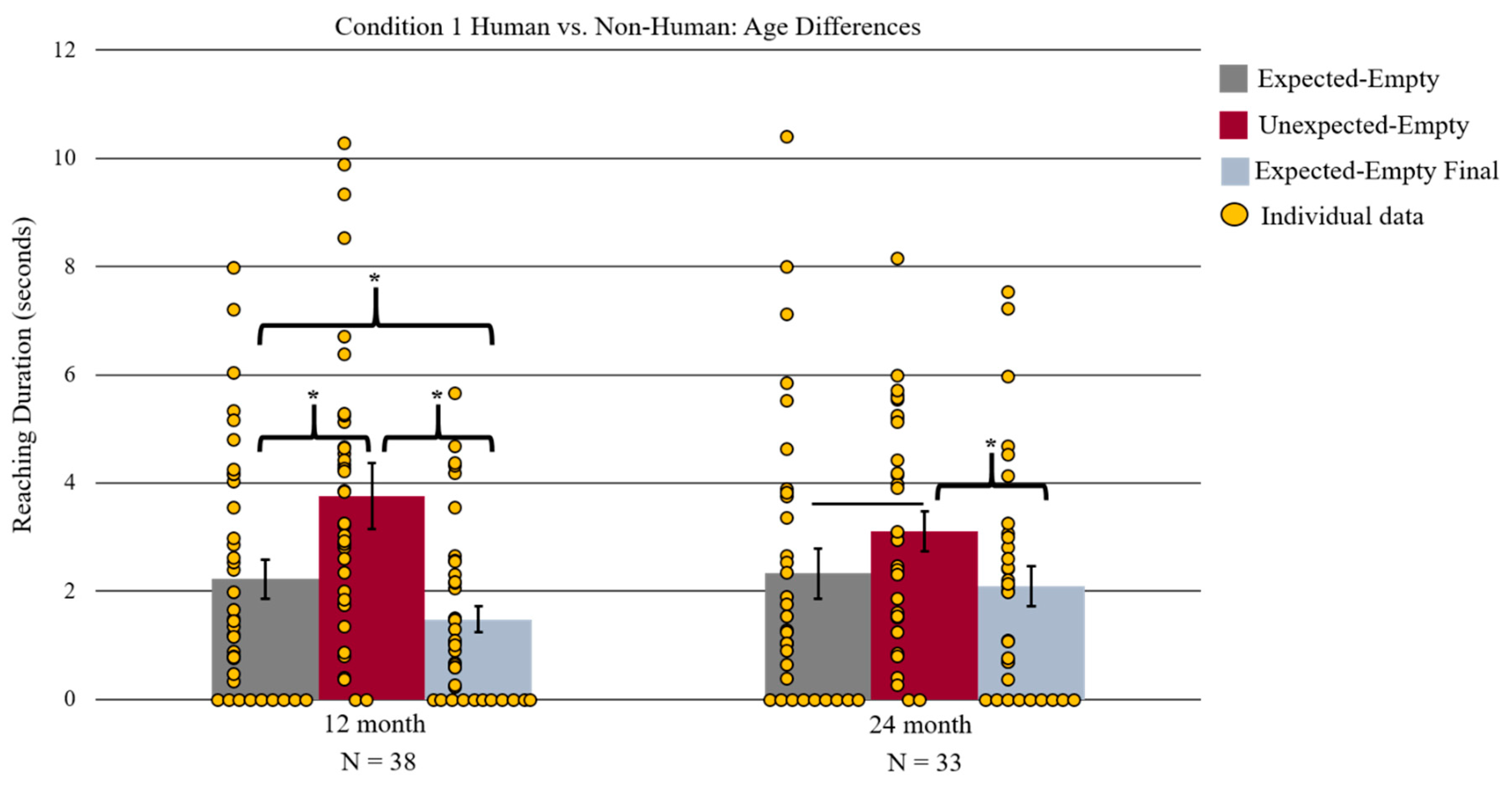
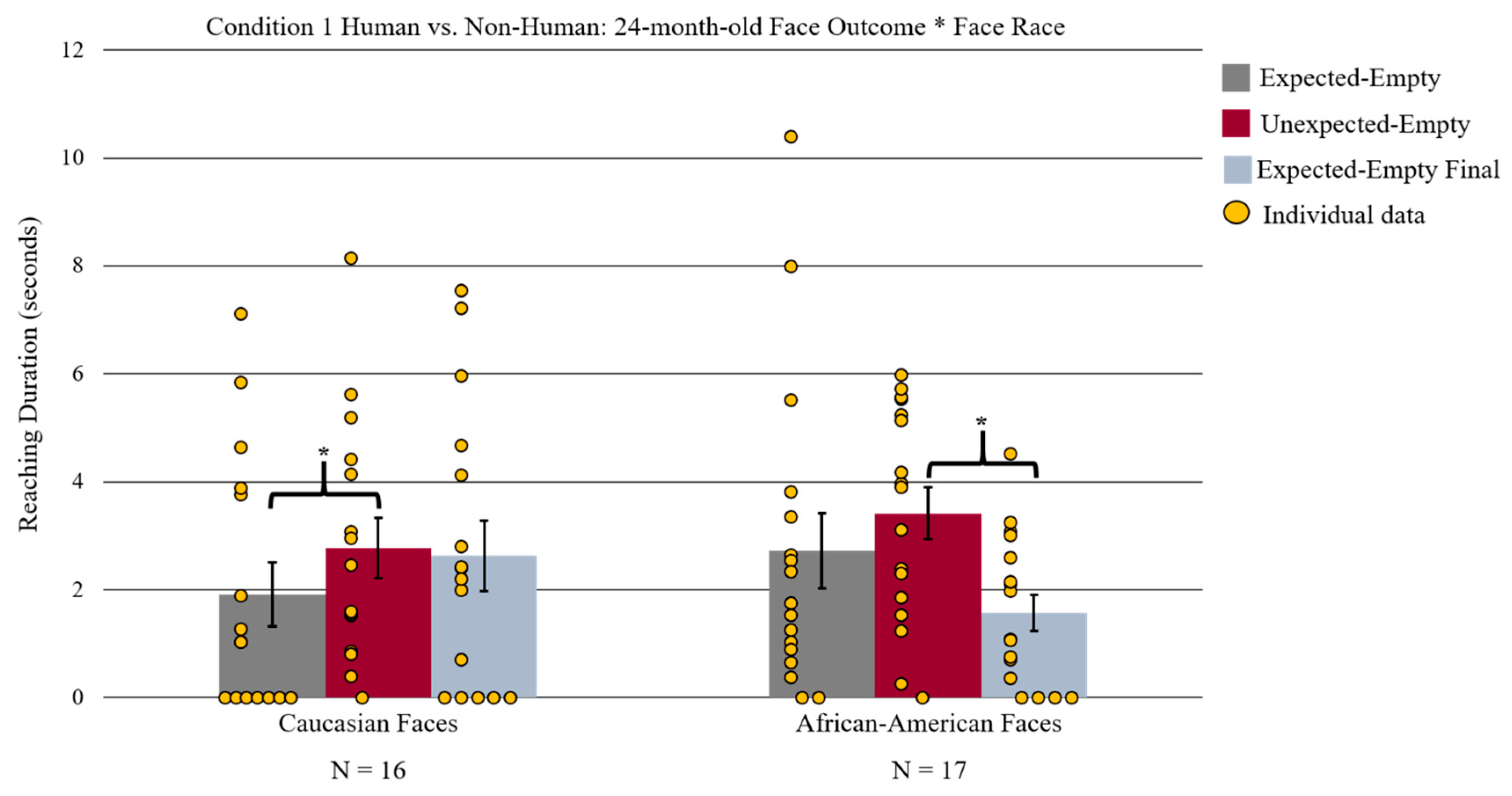
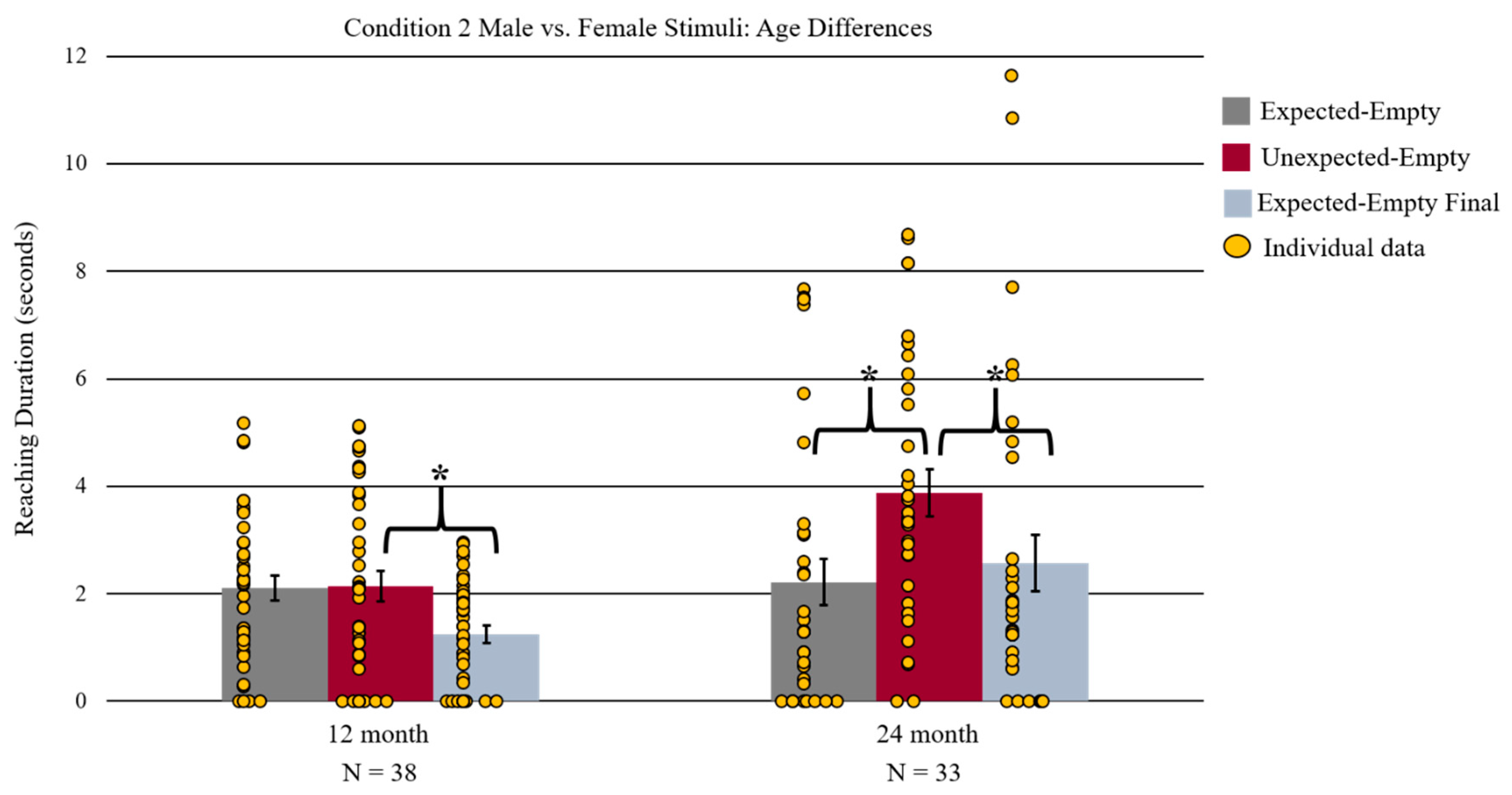
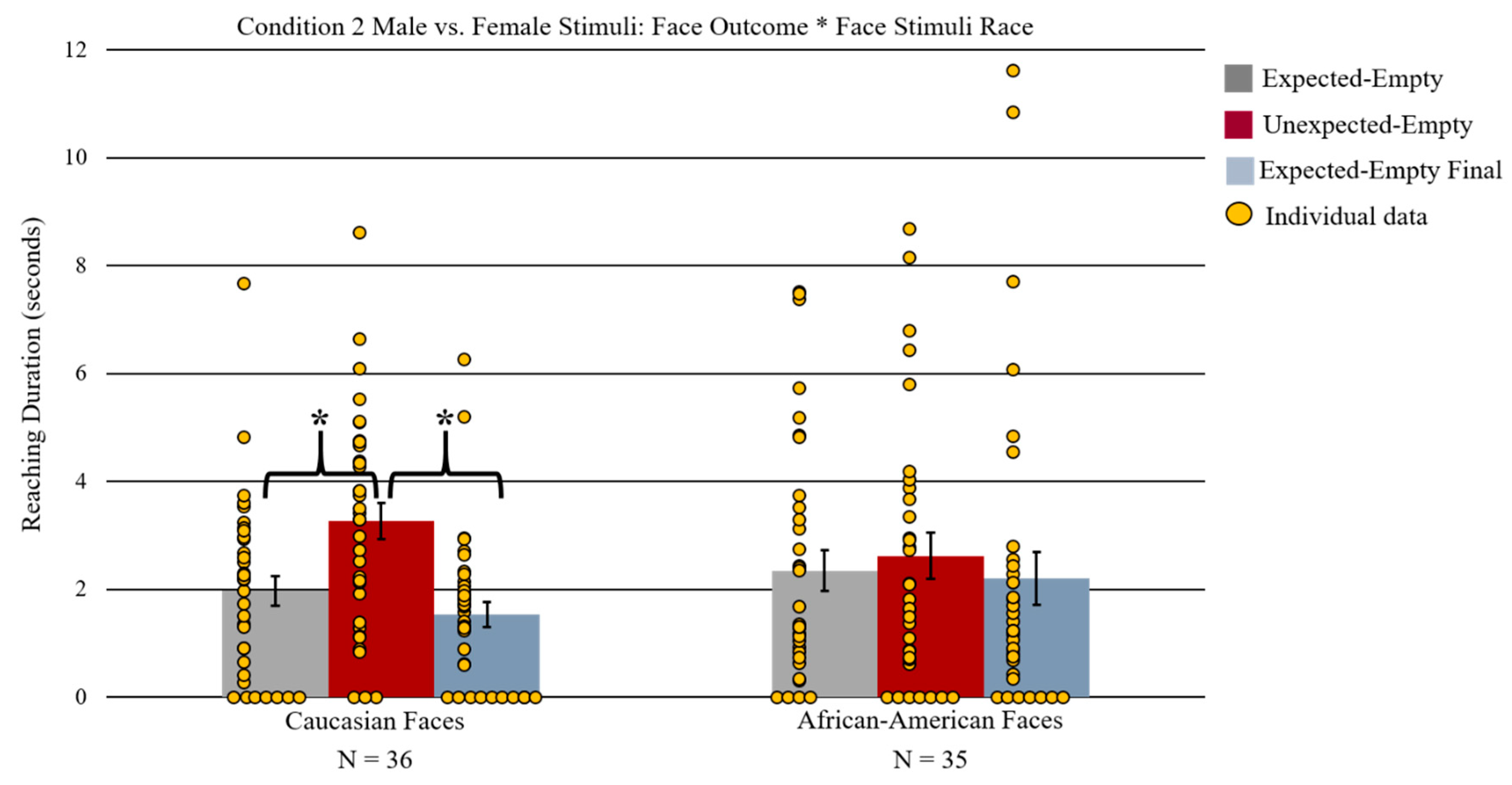
© 2019 by the authors. Licensee MDPI, Basel, Switzerland. This article is an open access article distributed under the terms and conditions of the Creative Commons Attribution (CC BY) license (http://creativecommons.org/licenses/by/4.0/).
Share and Cite
Pickron, C.B.; Cheries, E.W. Infants’ Individuation of Faces by Gender. Brain Sci. 2019, 9, 163. https://doi.org/10.3390/brainsci9070163
Pickron CB, Cheries EW. Infants’ Individuation of Faces by Gender. Brain Sciences. 2019; 9(7):163. https://doi.org/10.3390/brainsci9070163
Chicago/Turabian StylePickron, Charisse B., and Erik W. Cheries. 2019. "Infants’ Individuation of Faces by Gender" Brain Sciences 9, no. 7: 163. https://doi.org/10.3390/brainsci9070163
APA StylePickron, C. B., & Cheries, E. W. (2019). Infants’ Individuation of Faces by Gender. Brain Sciences, 9(7), 163. https://doi.org/10.3390/brainsci9070163



